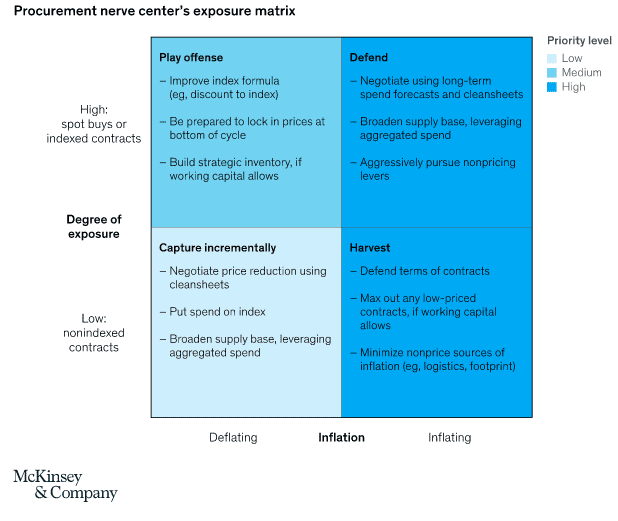The US and most of the rest of the world are in a period of high inflation.
Supply Chain Digest Says...
|
 |
| It’s been many years since buyers have faced an inflationary environment, and many have likely never experience such conditions broadly. |
 |
What do you say? |
| Click here to send us your comments |
|
 |
| Click here to see reader feedback |
|
Two cite just a couple of data points, the Prices Index from Institute for Supply Management, which tracks the direction of the costs to companies for materials, components, and finished goods from suppliers, clocked in at 68.2 for December. That means 68.2% of survey respondents were experiencing higher input costs, and the index has been over the 50 mark that separates higher versus lower supply costs for many months running.
And US wholesale prices, which also reflects the costs businesses are paying to suppliers, were up a sharp 9.7% for all of 2021, as measured by the Producer Price Index. That gain was the biggest on record in data going back to the start of the index in 2010.
And that means not good times – and maybe quite a bit of pressure – for procurement managers trying to get the higher prices waters to recede.
What is a procurement manager to do? The consultants at McKinsey recently published a guide to help buyers negotiate with suppliers who are seeking to hike prices – which means most of them today. The McKinsey recommendations include the following three steps:
Step 1 - Analyze the Hike
Analyzing the price hike involves identifying the main cost inputs that have the highest level of change and estimating the percentage of the total cost these inputs make up, McKinsey says.
That involves the difficult task of selecting a starting point that will be used to calculate the change in input costs, perhaps reviewing the past 3-5 years of economic data to see how prices have fluctuated.
From that basis, a tolerable price increase range should be calculated.
Step 2. Prioritize Categories
A company’s price exposure will vary by purchasing category and thus must be prioritized in terms of response, including determining which supply categories will be most likely to raise prices. Also, companies should review the terms of current contracts relative to price increases.
McKinsey provides a simple tool in terms of a matrix of possible actions, based on the direction of prices in a category and how much price exposure a company has, as shown below:

McKinsey says short term actions might include maximizing spend on existing contracts whose prices aren’t indexed for inflation and requesting “clawbacks” on unindexed contracts that covered periods when commodity prices fell.
(See More Below)
|
CATEGORY SPONSOR: SOFTEON |
|
|
| |
|
|
The report lists other options, including accelerating value engineering to reduce input needs or find substitutions, and adjusting batch sizes or order frequency. Optimizing supplier footprints for better control over logistics, cost, tariffs, and inventory is also worth investigating, McKinsey says.
Step 3 - Seek Win-Win Negotiations
McKinsey notes that if price increases from a supplier appear unavoidable, companies should try to find win-win strategies, such as asking vendors to help fund promotions to partly offset price hikes for customers. Of course, if all else fails, consider looking for new suppliers.
The report also says companies need to determine whether suppliers are passing along an increase that’s in line with inflation’s effect on the supplier’s costs.
It’s been many years since buyers have faced an inflationary environment, and many have likely never experience such conditions broadly.
“However, that’s changed, and merchants today are planning and buying for their categories amid one of the hardest inflationary environments industry has seen in decades,” McKinsey conclude, adding that “When a supplier brings a price increase to a merchant, especially in this economic environment, the buyer may not have the right tools, capacity, or time to determine whether a price increase is warranted.”
What do you think of the McKinsey recommendatios? Let us know your thoughts at the Feedback section below.
|